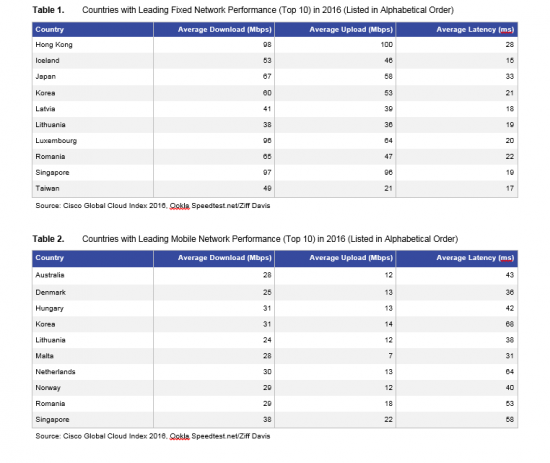































New and Emerging Applications Require Broadband Innovation
While the turn of the century and the hoopla that surrounded Y2K was nearly two decades ago, for many of us, it feels like the very recent past. As the year 2000 began, mobile carriers were just starting to offer data and texting capabilities. "Geek talk" at New Year's eve parties in 1999 included discussions around getting a dedicated DSL/Cable internet connection or even cooler was sharing a T-1 line to get better bandwidth and connectivity. It was a challenging time for service providers and operators with a downturn precipitated by the bursting of the "dot com" bubble and subsequent stock market repercussions. Traditional voice revenues were falling, while Internet and new digital revenues had not yet begun to bolster bottom-line growth in the telecom industry.
As we enter 2017, network operators are still focused on finding greater efficiencies while deploying new technologies to deliver greater bandwidth, lower latencies, and higher throughput for broadband products. Service providers are constantly striving to improve and transform their infrastructures to meet the changing digital demands of consumers and businesses (see video). It can often be difficult to balance network efficiency (cost savings) with cutting-edge innovations that can deliver affordable new service offerings with for consumers and businesses (top-line revenue growth).
Telecom operators have historically addressed these challenges by investing in hardware and software and that supported more device types (end points) and introduced new or enhanced services. As demand for applications and devices grew, the telecom industry has invested in infrastructure to improve network quality with 4G/LTE and high-speed broadband to accommodate smarter devices such as the iPhone (which led to larger-scale smartphone and tablet adoption). We have definitely come a long way since Y2K.
The basic applications of yesterday (text messaging and web browsing) required download and upload speeds around 10 kilobits per second (Kbps) and a latency of 160 milliseconds (ms). With the introduction of smarter devices and increased investment leading to better network quality, operators were able to support intermediate-level applications such as high-definition video streaming and electronic health records (EHR) by healthcare providers. These intermediate applications required around 2 megabits per second (Mbps) download, 800 Kbps in upload speed and 100 ms or lower latency ranges.
The tables below show the 2016 average fixed and mobile speeds and latencies of the leading countries (based on network performance characteristics) around the world:

While these metrics set an impressive measure of performance (and represent significant improvement over the last decade), the telecommunications industry is at the cusp of yet another service/demand crossroad. There are new and much more advanced demands on public and private networks driven by cloud and IoT-based applications such as 4K streaming, connected/autonomous car safety applications, Virtual Reality (VR) streaming, and Telemedicine (just to name a few). These advanced applications and others will require download speeds that exceed 50 Mbps with latencies less than 10 ms (as well as advanced application management). Some tactile operations such as robotic surgeries will require latencies that are much lower. The potential capabilities of 5G, 802.11ad and further fiber deployments are poised to be the right solutions to support a new era of connectivity. In other words, more bandwidth and intelligent infrastructures can serve as the essential foundation upon which service provider innovation can be built to create new services/applications and sustainable growth.
Together, we'll learn why and how networks still matter in 2017 - Happy New Year!
Helpful Links:
 Hot Tags :
Cloud
Internet of Things (IoT)
Service Provider
applications
connected car
#CiscoGCI
telecom
network refresh
network intelligence
Hot Tags :
Cloud
Internet of Things (IoT)
Service Provider
applications
connected car
#CiscoGCI
telecom
network refresh
network intelligence